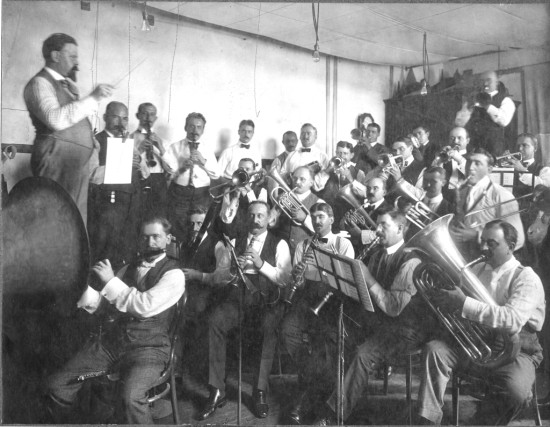Hello again!
One of the long running debates in education is the question of who is ultimately responsible for student learning - the student, or the teacher?
This is a topic that nearly everyone and their dog will contest at some point, even people outside of the education world. The student who had a terrible experience with their teachers might blame their school experience for their lack of enthusiasm for learning, or their poor lot in life. The person who fought tooth and nail to become successful might argue that it's the student's responsibility.
It's also like the argument for technology in schools. Some people say, "That's how students learn now" while other might say, "If they really want to learn, they can read out of a textbook. That's how we've been learning for hundreds of years, and it worked just fine." The answer varies from person to person depending on their personality and experience.
Everyone has an opinion. But who is right? And more importantly, how should we as teachers look at this argument? A teacher's stance on this issue has a huge impact on how they structure their classes, assignments, and teaching style. At some point, we all need to analyze this philosophical point and take a stance.
"Ultimately, the Student is Responsible"
Can you really argue against this stance?
We live in a society that believes that you can be anything you want to be if you're willing to do the work that is necessary. Regardless of what happens around you, regardless of your circumstances, you can be successful. But it's not easy - it's hard. And ultimately, if you don't make it, you only have yourself to blame.
Just like in the classroom. You might have the world's worst teacher, or the world's most boring teacher. But does that give you license to fail? How many of us have had teachers whose class worked something like this:
"Today we're going to read Chapter 16. After we're finished you will answer questions 1-20 at the back of the chapter for your homework assignment." Either the class takes turns reading, or the teacher reads.
Were these inspiring or even interesting classes? No. We all had teachers like this. But just because they weren't really teaching, did that give us permission to fail? No. And most of us didn't. We might not have learned much, but we did the work and passed the class.
I've heard the argument many times that no matter what you do, it's ultimately the student who is responsible for their learning. After all, you can't be sure the student is really practicing. You can't make them take their instrument home, and sometimes you just know that they're forging the initials on their practice charts.
If the student really wanted to be good, they would practice, right? Right. So if they don't practice, it's because they don't care. Whose fault is that? Not caring is a mind set, so didn't the student choose that? If a band walks into rehearsal and hardly does more than waste time, it's because they don't care about being good, right?
Many would say, "Right." I've literally heard an active, veteran band director say (not one I'm close to, by the way), "The kids at my school suck." I've also heard things like, "The students just don't care.", or, "That school just has good students."
Is it true that some schools have better students than other schools? After all, some schools are TEA recognized or exemplary, while others are at the bottom of the barrel. Why do some campuses have high academic achievement while others struggle? Maybe it's the students.
And maybe it's not totally their fault. Maybe they come from bad neighborhoods, or have bad parents. I think we can all agree that schools have different demographics, and that the demographics of a school do impact the culture and present different challenges for the faculty and administration. All of those things, many will agree, are outside of our control.
But is all of this really outside of our control? Or at least outside of our realm of influence? Not according to the other camp. They believe that....
"Ultimately, the Teacher is Responsible"
After you left that class where the teacher's version of teaching was to have students grade the previous night's homework, take turns reading the chapter, and then individually answer questions at the back of the book, you probably were relieved to be sitting in a class where the teacher took a radically different approach.
 |
Not the worst on screen interpretation
of a music teacher. =^) |
I used to think I didn't like History, and that it was a weak subject for me. Non-sense. I've come to discover that history fascinates me. While I often found the first year of Music History to be boring, the second year was much more interesting. I also had a different teacher. He still lectured from notes based on the book, but he had a way of making it interesting by bringing it to life.
I enjoy watching the History channel (when they're not running sensationalist documentaries). For example, I loved watching, "America: The Story of Us". Why? Because they brought US History to life. It was dramatic. It was compelling. While I had already previously learned most of what they covered, now it was being put into context by telling the story of individuals, their struggles, and their triumphs, which ultimately were part of the nation's greater struggles and triumphs. That's
so much more exciting than, "Chapter 16".
What many great teachers will say is that we have the power to influence them. Great teachers can make students care. They can make the material interesting. They can make class enjoyable rather than boring, or uncomfortable. They can structure their instruction to cater to all learning styles and intelligences. And so on.
While a school cannot control the environment in which it is founded, many believe it has the power to influence its surrounding community. One philosophy of learning says that to make the material relevant to students, the knowledge should be used in the context of carrying out projects that improve a student's surroundings, whether the project is focused on improving the school or the community.
And we know all of this is true. We know that the teacher makes a huge difference in the success of a student. Not only are studies showing this, but we know this from our own experiences. Tim Lautzenheiser, in his clinics, always has people close their eyes and envision the teacher that made a huge difference in their life, then reminds them that someday one of their students will be asked to do the same thing, and it will be
their face the student sees.
So while students can choose to be good or not to care, ultimately we can also say that a master teacher can change that student's attitude using a slew of approaches. Ultimately, teachers are responsible.
But wait, even master teachers can't seem to get every student on board. So who is really ultimately responsible?
Choose Possibility!
Honestly, I don't think the philosophical point is what really matters. What really matters is how we, as teachers, perceive it to fit our own purposes. Our goal should always be to aim to be the best teacher we can be, to make the biggest positive impact on our students that we can with the time that we have with them.
Ultimately, you can't logically argue one point over the other. They're both technically correct, and impossible to prove wrong. This is where our friend
Ben Zander comes in.
Ben Zander co-authored the book "The Art of Possibility" with his wife, in which they outline 12 practices to change how you see the world around you, and operate within in. They argue a couple of interesting points that I think we can all agree with.
"It's all invented."
This is simply another way of saying that everything is what you make of it. And we can all agree with that. Different people live in different worlds, based on what they believe and how they interpret the world around them, and the actions of the people that inhabit it. Some people choose to believe that the teacher is ultimately responsible for learning, while others choose to believe it's the student. And technically they're both right!
But here's the kicker. It
is a choice. You
choose how to perceive the world around you. And with that in mind...
"Choose the option that creates possibilities."
If the teacher decides that ultimately it's the student who is responsible for their own outcomes, then where does that leave the teacher? The teacher, with that view point, has no power to influence the learning outcomes of their students. The students will either succeed or fail, to varying degrees, based on their own motivation (or lack thereof) to succeed. There is nothing the teacher can do about it.
Is that really what you want to believe as you go about your day?
On the other hand, if you believe that the teacher is responsible, suddenly you accept full responsibility for everything that happens in your classes. If a student doesn't get it, it's not
their fault, it's the fault of
your instruction. If your instruction is working for most students, but not other students, then it means (if you want them all to be successful) you can look for ways to improve your instruction to cater to different learning styles and abilities. The important thing is this...
Suddenly, by
choosing this view point, you have opened up possibilities. Now, where as before you were helpless, you now have
options. You can work at it until you hopefully find something that works.
That's no garuantee that you'll get every student. Individuals are different enough that we may never succeed in doing this. But I'll also say this - every master teacher I know chooses this perspective. They choose to believe that they are accountable for all the outcomes, good and bad. They don't necessarily lament the bad outcomes, but they choose to use it as feedback of their instructional methods, and then look for ways to improve their methods so that they reach the students they might have missed before. Or at least improve the outcomes in some way.
They're always looking for ways to improve.
And they're already the best!
So if you happen to be of the camp that says that students are ultimately responsible, I implore you to choose a different view point. Choose the view point that creates possibilities, that gives you options, that gives you a path to make a difference. While this may not be a prerequisite for becoming a good teacher, it seems to me that it's a prerequisite for becoming a
great teacher.
Musically yours,
Mr. Cooper























